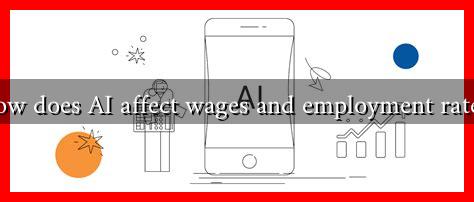-
Table of Contents
How Does AI Affect Wages and Employment Rates?
Artificial Intelligence (AI) is transforming industries and reshaping the workforce landscape. As businesses increasingly adopt AI technologies, the implications for wages and employment rates are profound and multifaceted. This article explores how AI influences job markets, wage structures, and the future of work.
The Rise of AI in the Workplace
AI technologies, including machine learning, natural language processing, and robotics, are being integrated into various sectors such as manufacturing, healthcare, finance, and customer service. This integration is driven by the need for efficiency, cost reduction, and improved decision-making. According to a report by McKinsey, AI could contribute an additional $13 trillion to the global economy by 2030, highlighting its potential impact on productivity and economic growth.
Impact on Employment Rates
The introduction of AI into the workplace has sparked debates about job displacement versus job creation. Here are some key points to consider:
- Job Displacement: AI can automate routine tasks, leading to job losses in certain sectors. For instance, a study by the World Economic Forum predicts that by 2025, 85 million jobs may be displaced due to the shift in labor between humans and machines.
- Job Creation: Conversely, AI also creates new job opportunities. Roles in AI development, data analysis, and machine maintenance are on the rise. The same World Economic Forum report suggests that 97 million new roles may emerge that are more adapted to the new division of labor between humans and machines.
- Sector-Specific Effects: The impact of AI varies by industry. For example, while manufacturing jobs may decline due to automation, sectors like healthcare and technology are likely to see growth in employment opportunities.
Wage Dynamics in an AI-Driven Economy
AI’s influence on wages is equally complex. The technology can lead to wage polarization, where high-skilled workers see wage increases while low-skilled workers face stagnation or declines. Here are some factors contributing to this phenomenon:
- Skill Gap: As AI takes over routine tasks, there is a growing demand for high-skilled workers who can design, implement, and manage AI systems. This demand drives up wages for these roles.
- Low-Skilled Job Vulnerability: Low-skilled jobs are more susceptible to automation, leading to wage suppression in these sectors. For instance, jobs in manufacturing and retail are increasingly being replaced by automated systems.
- Geographic Disparities: Regions with a high concentration of tech companies may experience wage growth due to increased demand for skilled labor, while areas reliant on traditional industries may see stagnation.
Case Studies: AI’s Impact on Specific Industries
To illustrate the effects of AI on wages and employment, consider the following case studies:
- Manufacturing: Companies like Tesla and General Motors are using AI-driven robots for assembly line tasks. While this has increased productivity, it has also led to a reduction in the number of assembly line jobs.
- Healthcare: AI applications in diagnostics and patient management are creating new roles for data analysts and AI specialists, while also enhancing the efficiency of healthcare delivery.
- Finance: AI algorithms are streamlining processes such as fraud detection and risk assessment, leading to a demand for skilled professionals who can interpret AI outputs and make strategic decisions.
Preparing for the Future of Work
As AI continues to evolve, it is crucial for workers, employers, and policymakers to adapt. Here are some strategies to consider:
- Upskilling and Reskilling: Workers should invest in continuous learning to acquire skills relevant to an AI-driven economy. Online platforms like Coursera and edX offer courses in AI and data science.
- Policy Interventions: Governments should implement policies that support workforce transitions, such as retraining programs and social safety nets for displaced workers.
- Collaboration Between Sectors: Businesses, educational institutions, and governments must collaborate to ensure that the workforce is prepared for the changes brought about by AI.
Conclusion
The impact of AI on wages and employment rates is a double-edged sword. While it presents opportunities for job creation and wage growth for high-skilled workers, it also poses challenges for low-skilled workers facing displacement. As we navigate this evolving landscape, it is essential to prioritize education, policy support, and collaboration to ensure that the benefits of AI are shared broadly across society. By doing so, we can harness the potential of AI to create a more equitable and prosperous future for all.
For further reading on the implications of AI in the workforce, you can explore resources from the World Economic Forum.


